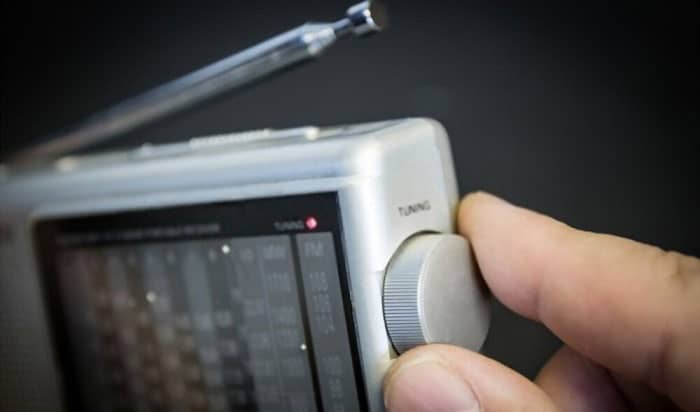Which of the following are radio waves that provide a high-speed signal transmission? AM, FM, or microwaves? In this article, we will give you the exact answer to this question and other helpful information. So, without further ado, let’s find out!
Table of Contents
Which Radio Waves Provide a High-Speed Signal Transmission?
The answer is microwaves. Radar systems and aircraft navigation are applications of microwaves.
Microwaves and radio waves are both electromagnetic waves. The critical difference between microwaves and radio waves is that radio waves have a longer wavelength than microwaves. But, microwaves contain higher energy.
What Are Radio Waves?
In general, radio waves are a type of electromagnetic radiation widely utilized in communication technologies, such as broadcasting television, communications and satellite transmissions (air traffic control and AM & FM radio).
The radio frequency spectrum is a part of the electromagnetic spectrum, which is usually divided into 7 regions:
- Gamma-rays
- X-rays
- Ultraviolet
- Visible light
- Infrared
- Microwaves
- Radio waves
Radio waves are an invisible form of electromagnetic radiation that varies in wavelength from about 1 mm to over 100 km. So it has one of the vastest ranges in the electromagnetic spectrum. This wavelength range is divided into nine groups, which correspond to the nine bands of radio waves.
| Designation | Frequencies | Wavelengths |
| Extremely Low Frequency | <3 kHz | >100 km |
| Very Low Frequency | Between 3 and 30 kHz | 10 km – 100 km |
| Low Frequency | Between 30 and 300 kHz | 1 m – 10 km |
| Medium Frequency | Between 300 kHz and 3 MHz | 100m – 1 km |
| High-Frequency | Between 3 and 30 MHz
|
10 m – 100 m |
| Very High-Frequency | Between 30 and 300 MHz
|
1 m – 10 m |
| Ultra High-Frequency | Between 300 MHz and 3 GHz | 10 cm – 1 m |
| Super High Frequency | Between 3 and 30 GHz | 1 cm – 10 cm |
| Extremely High Frequency | Between 30 and 300 GHz | 1mm – 1cm |
1. Low to Medium Frequencies
ELF radio waves, the lowest in the radio frequency range, are used for one-directional communication with submarines. In fact, some countries, such as the US, China, and India, have built ELF communication stations.
VLF frequencies range from 3 to 30kHz, and are often used in security systems, military, submarines, etc. LF frequencies range from 30 to 300 kHz, and are commonly used in marine and aeronautics. Meanwhile, MF frequency (from 300kHZ to 3MHz) is used for maritime, aviation, and medium wave commercial broadcasting.
Notably, ELF and VLF can be produced from lightning, and these waves can reflect between the Earth’s surface and the ionosphere.
2. Higher Frequencies
Very High Frequency (VHF) is used in mobile radio, marine, aviation, commercial broadcasting, and commercial television. Ultra-high frequencies ranging from 300MHz to 3GHz (UHF) are used for e-commerce television channels, terrestrial information services, radar, microwave systems, satellites, etc.
These frequency bands typically use “frequency modulation” (FM) to encode, or mix, an audio or data signal into the carrier.
3. Shortwave radios
Shortwave radio utilizes frequencies in the HF range, from about 1.7 MHz to 30 MHz. Perhaps the most notable use of shortwave radio was during the Cold War in the 90s. However, today, this technology has declined in popularity. Receiving shortwave signals may be difficult due to interference, internet routers, and other reasons.
4. Highest Frequencies
Super High Frequency and Extremely High Frequency represent the highest frequencies in the radio range.
SHF is commonly used in point-to-point communication. It has wide applications, from Wifi technology to satellite communication and cancer treatment.
In modern life, SHF waves play an essential role in the technological breakthrough of electronic devices. The strong development of wireless devices has replaced old wired devices based on SHF’s technology.
Finally, Extremely High Frequency waves can be absorbed by atmospheric gases, and therefore are not used as much as other radio bands terrestrially. EHF is used in radio astronomy, weapons like automated guns, and airport security scanners.
Differences Between Microwave and Radio Wave
- Radio waves can transmit long distances, up to thousands of miles. Microwaves can only travel shorter distances.
- Radio waves have applications like radiolocation, telephone communications, and radio telescopes. Microwaves have applications like heating food and traffic cameras.
- Radio waves can bend around objects, whereas microwaves usually travel in a straight route.
Conclusion
Hopefully, by now, you should have known the answer to “Which of the following are radio waves that provide a high-speed signal transmission?” If you find these facts helpful for others, feel free to share them or leave comments below. Thank you for your interest in this article!

Hi, I am Amaro Frank – the Wind Up Radio’s content editor and writer. Working with Adam is so much fun, as his stories and experiences enrich my knowledge about radio communications and radio accessories. My main tasks in Wind Up Radio are building content and generating great articles on different topics around radio accessories.



